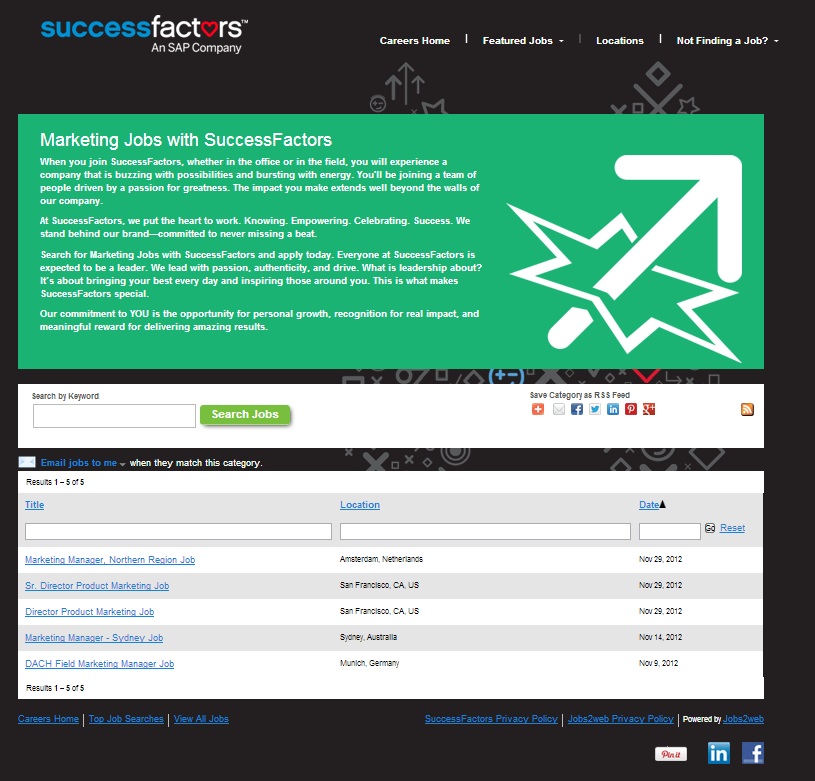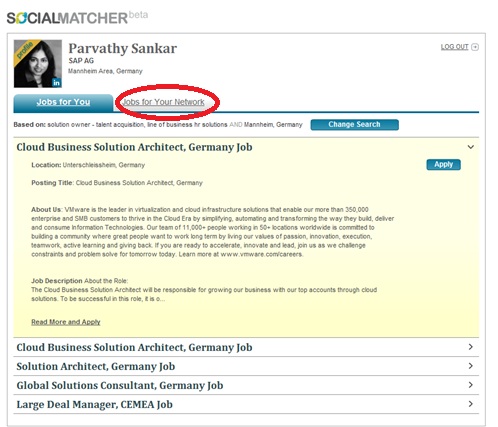
- SAP Community
- Products and Technology
- Enterprise Resource Planning
- ERP Blogs by SAP
- Attracting the Right People to the Right Job: Tren...
- Subscribe to RSS Feed
- Mark as New
- Mark as Read
- Bookmark
- Subscribe
- Printer Friendly Page
- Report Inappropriate Content
With emerging technologies, several changes have happened in different parts of the organization. HR also moved from being just one of the supporting functions to becoming the driver for one of the most important assets of the organization – PEOPLE.

THE function that brings TALENT into the organization, recruiting, has also shifted. From just being a process oriented, administrative recruiters have become true business partners to the hiring managers. From being a process controller, a recruiter has become a collaborative partner and consultant facilitating getting the right people in the right place at the right time. Recruiters grew into a trusted partner and single point of contact for the candidates. While the recruiting function went through this transformation, all stakeholders adjusted to the many changes in the environment:
- Changes in demography and technology drove companies to adjust to diverse market requirements
- Behavioural changes occurred with networking and collaboration becoming backbone of several employer activities
- Difficult economic times made the organizations focus heavily on business results including effective planning and execution
Demographic and Technology changes
With more than 500%* increase in Internet penetration rate worldwide in the last 12 years, information became accessible at the finger tips. Understanding companies and the opportunities available in a company was now possible anytime, anywhere and with a few clicks. By positioning jobs where the candidates are present (e.g. on facebook) helped the talent to find the right fit when looking for new challenges.

Each organization has different opportunities for talent interested in the company. There are strategic leadership roles, key jobs that require specialized skills as well as jobs that attract several candidates leading to the necessity to find the best fit. Besides this, the workforce has seen a change in demographics with more and more millenials vying for key jobs with experienced candidates who have different aspirations. The recruiters need to attract the appropriate talent base with the right message to help them relate better to the environment they would enter into.

Networking and Collaboration:
Networks have become a norm of life – whether it is a professional network like LinkedIn or XING or a personal network like Facebook or a thought sharing platform like Twitter or WEIBO. As a result, one now understands the aspirations and achievements of one’s network. Social media and mobile usage bring people close together in the virtual as well as physical world. Referral and trusted recommendations brought the best fit. These well qualified and known candidates increased the chances for retention of the new hire with effective productivity as the new talent settled into the new company.

With networks becoming prevalent and social media exposing everyone to each other’s opinions, it was not long before collaboration became a backbone of the interactions in different aspects of life. As a result, recruiters, hiring managers and other stakeholders are, today, co-operating right from the time of planning a job, defining a job, all the way until a candidate is hired into the company and the candidate becomes a productive employee.

Focus on results:

Finally, what you cannot measure, you cannot improve. In these difficult economic times, it becomes even more important for recruiters and sourcers to focus on the most effective means of finding the right candidates and from the right sources. By tracking the effectiveness of the process, all the way from attracting the candidates, to engaging with the candidates, to assessing and selecting until the candidate starts performing well in the company, recruiting function becomes extremely productive. By investing only in those sources and activities that have proven to yield the best performing talent within the organization, recruiting function can now effectively help identify talent.
- SAP Managed Tags:
- HCM (Human Capital Management)
You must be a registered user to add a comment. If you've already registered, sign in. Otherwise, register and sign in.
-
Artificial Intelligence (AI)
1 -
Business Trends
363 -
Business Trends
22 -
Customer COE Basics and Fundamentals
1 -
Digital Transformation with Cloud ERP (DT)
1 -
Event Information
461 -
Event Information
24 -
Expert Insights
114 -
Expert Insights
156 -
General
1 -
Governance and Organization
1 -
Introduction
1 -
Life at SAP
415 -
Life at SAP
2 -
Product Updates
4,685 -
Product Updates
217 -
Roadmap and Strategy
1 -
Technology Updates
1,502 -
Technology Updates
89
- Can we have a section where we can share ideas which can further improvement user experiances ? in Enterprise Resource Planning Q&A
- 5 talent management strategies to overcome recruiting and onboarding challenges in a hybrid workforce in Enterprise Resource Planning Blogs by Members
- Emerging Trends in Emerging Economies: Manufacturing Perspective Semiconductor Industry in Enterprise Resource Planning Blogs by SAP
- SAP Autism at Work: Accelerating Inclusion Together in Enterprise Resource Planning Blogs by SAP
- Hired for a skill, evaluated for another in Enterprise Resource Planning Blogs by Members
| User | Count |
|---|---|
| 12 | |
| 11 | |
| 10 | |
| 8 | |
| 7 | |
| 6 | |
| 4 | |
| 4 | |
| 4 | |
| 3 |